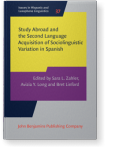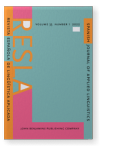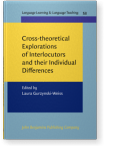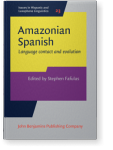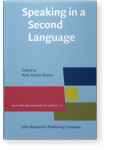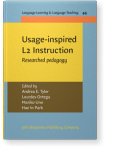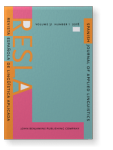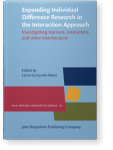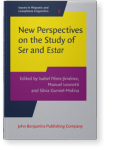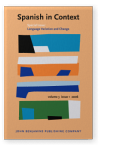Kimberly L. Geeslin †
List of John Benjamins publications for which Kimberly L. Geeslin † plays a role.
2024 Chapter 3. The second language acquisition of variation in adulthood and language change Lifespan Acquisition and Language Change: Historical sociolinguistic perspectives, Sanz-Sánchez, Israel (ed.), pp. 64–83 | Chapter
Research on the second language acquisition of sociolinguistic variation is grounded in an understanding of sociohistorical linguistics. The patterns attested in language change provide a foundation for understanding the language of second language learners. This chapter provides an overview of… read more
2023 Epilogue: Modeling the acquisition of L2 variation through study abroad research Study Abroad and the Second Language Acquisition of Sociolinguistic Variation in Spanish, Zahler, Sara L., Avizia Y. Long and Bret Linford (eds.), pp. 350–368 | Chapter
2022 Chapter 7. Linguistic variation and second language Spanish: A study of progressive and habitual marking by English-speaking learners Variation in Second and Heritage Languages: Crosslinguistic perspectives, Bayley, Robert, Dennis R. Preston and Xiaoshi Li (eds.), pp. 159–198 | Chapter
Research on progressive and habitual aspectual marking in Spanish provides a productive test case for second language variation research. In Spanish, two forms can be used to reference ongoing action at speech time (simple present and present progressive) while English predominantly makes use of… read more
2022 The role of referent cohesiveness in variable subject expression in L2 Spanish Spanish in Context 19:3, pp. 508–536 | Article
This study examines the development of variable subject expression in Spanish across multiple proficiency levels of second-language learners. We employ a cross-sectional design and a written contextualized task in order to explore the differences in rates of subject forms as well as the degree… read more
2022 Developing language attitudes in a second language: Learner perceptions of regional varieties of Spanish Revista Española de Lingüística Aplicada/Spanish Journal of Applied Linguistics 35:1, pp. 206–235 | Article
The current study explores the second language(L2) acquisition of subconsciously held language attitudes. Specifically, we determine whether L2 learners perceive differences between Spanish speakers of four geographic varieties and evaluate them differently, and if these perceptions change with… read more
2021 Chapter 10. Sophisticated language use in context: The contributions of variationist approaches to the study of advanced learners of Spanish Advancedness in Second Language Spanish: Definitions, challenges, and possibilities, Menke, Mandy R. and Paul A. Malovrh (eds.), pp. 219–244 | Chapter
This chapter describes the contributions of variationist approaches to the study of advancedness in second language (L2) Spanish. We offer a brief overview of the variationist perspective on language and language use, reviewing how variationist approaches have been applied to the study of L2… read more
2020 Chapter 6. Variationist perspective(s) on interlocutor individual differences Cross-theoretical Explorations of Interlocutors and their Individual Differences, Gurzynski-Weiss, Laura (ed.), pp. 127–158 | Chapter
The variationist perspective provides tools for modeling language use in context by incorporating the influences of social and linguistic factors in the interactional setting. These influencing factors include speaker characteristics (age, regional origin), characteristics of the setting… read more
2020 Chapter 13. Preparing for tenure & promotion Professional Development in Applied Linguistics: A guide to success for graduate students and early career faculty, Plonsky, Luke (ed.), pp. 181–202 | Chapter
The present chapter addresses the core issues related to the process of securing tenure with the primary goal of identifying the sources of confusion and making transparent some of the unspoken expectations that tend to dominate the field of applied linguistics. It is our belief that the better… read more
2020 Chapter 2. Bilingualism, second language acquisition, and language contact: Contrasts and shared processes Amazonian Spanish: Language Contact and Evolution, Fafulas, Stephen (ed.), pp. 35–56 | Chapter
This chapter introduces the central issues and concepts in the fields of bilingualism, contact linguistics, and second language acquisition, with an eye to identifying generalizations and key distinctions. For example, although authors use terms like transfer, interference, bilinguals, etc.,… read more
2020 Chapter 7. Examining the role of instructor first language in classroom-based oral input Cross-theoretical Explorations of Interlocutors and their Individual Differences, Gurzynski-Weiss, Laura (ed.), pp. 159–186 | Chapter
In instructed second language (L2) settings, instructor-provided input is essential for learners’ interlanguage development. While some input is consciously modified by instructors to assist learners, much of instructors’ speech contains inherent linguistic variability mediated by linguistic,… read more
2018 Chapter 1. Sociolinguistic competence and the acquisition of speaking Speaking in a Second Language, Alonso, Rosa Alonso (ed.), pp. 1–24 | Chapter
In face-to-face spoken interactions, language learners must construct a meaningful message consistent with the L2 grammar, articulate it comprehensibly, and manage the aspects of oral communication that reflect speaker identity, interlocutor identities, and the characteristics of the… read more
2018 Chapter 13. Examining multifaceted sources of input: Variationist and usage-based approaches to understanding the L2 classroom Usage-inspired L2 Instruction: Researched pedagogy, Tyler, Andrea E., Lourdes Ortega, Mariko Uno and Hae In Park (eds.), pp. 291–311 | Chapter
Input is a central, driving component in nearly all theories of second language acquisition, but little is known about the relationship between the instructor-provided input to which classroom second language learners are exposed and attested patterns of acquisition. Our study investigates this… read more
2018 Acquisition of sociophonetic variation: Intervocalic /d/ reduction in native and nonnative Spanish Revista Española de Lingüística Aplicada/Spanish Journal of Applied Linguistics 31:1, pp. 309–344 | Article
This study investigates the acquisition of nativelike variation in the production of Spanish /d/ by English-speaking learners. Specifically, we examine the production of /d/ in word-internal intervocalic position in the speech of 13 highly advanced nonnative speakers (NNSs) and 13 native… read more
2017 Chapter 10. Linguistic variation in instructor provision of oral input Expanding Individual Difference Research in the Interaction Approach: Investigating learners, instructors, and other interlocutors, Gurzynski-Weiss, Laura (ed.), pp. 225–253 | Chapter
The current study examines the variable use of verbal subjects (e.g., explicit yo hablo vs. null hablo ‘[I] speak’), in oral production by five native-speaking instructors directed to Spanish foreign language (FL) learners in a university setting. Our data consisted of instructors’ oral… read more
2016 Subject expression in Spanish: Contrasts between native and non-native speakers for first and second-person singular referents Spanish in Context 13:1, pp. 53–79 | Article
Research on variation demonstrates that analyses of frequency and predictors of use contribute to our understanding of languages. Investigations of subject expression in Spanish in particular have identified differences across person and number of the verb that suggest that linguists should focus… read more
2016 Lexical frequency and subject expression in native and non-native Spanish: A closer look at independent and mediating effects Spanish Language and Sociolinguistic Analysis, Sessarego, Sandro and Fernando Tejedo-Herrero (eds.), pp. 197–216 | Article
This paper investigates the effect of lexical frequency on third-person subject form variation by native and highly-advanced non-native speakers of Spanish. In line with previous research, verb tokens which represented 1% or more of the total tokens were categorized as frequent whereas all others… read more
2015 The development and use of the Spanish copula with adjectives by Korean-speaking learners New Perspectives on the Study of Ser and Estar, Pérez-Jiménez, Isabel, Manuel Leonetti and Silvia Gumiel-Molina (eds.), pp. 293–324 | Article
The current investigation explores the development and use of the Spanish
copulas with adjectives by Korean-speaking learners. Twenty-three adult
university-level Korean-speaking learners of Spanish in South Korea completed
a sociolinguistic interview task, a background questionnaire, and a… read more
2011 Copula use in the Spanish of Venezuela: Is the pattern indicative of stable variation or an ongoing change? Spanish in Context 8:1, pp. 73–94 | Article
This investigation extends the research on the use of Spanish copulas ser and estar in Venezuela to all [copula + adjective] contexts (see De Jonge 1993; Malaver 2000 for work on expressions of age). Findings reveal that resultant state, adjective class, predicate type, experience with the… read more
2007 14. Linguistic and social predictors of copula use in Galician Spanish Spanish in Contact: Policy, Social and Linguistic Inquiries, Potowski, Kim and Richard Cameron (eds.), pp. 253–273 | Article
Although the two copular verbs,serandestar‘to be’, have been the subject of extensive debate in theoretical linguistics (Fernández Leborans 1999), less in known about how the use of these two verbs varies from one Spanish-speaking region to another. The sociolinguistic research conducted to date… read more
2007 The Sla of Variable Structures: Analyzing Obligatory and Variable Contexts ITL - International Journal of Applied Linguistics 153, pp. 25–51 | Article
This study examines the acquisition of copula choice, more particularly the contrast between ser and estar ('to be') in Spanish by native speakers of Portuguese. Our research differs from previous work because the first language of the participants included also contains a copula contrast. Our… read more
2006 Copula choice in the Spanish of Galicia: The effects of bilingualism on language use Language Variation and Change: Historical and contemporary perspectives, Mar-Molinero, Clare and Miranda Stewart (eds.), pp. 63–83 | Article
Although ser and estar have been studied extensively (Luján 1981; Clements 1988; Leonetti 1994; Fernández Leborans 1999; Geeslin 2005), less is known about how the use of these copulas varies from one Spanish-speaking region to another. To date, sociolinguistic research has been conducted on… read more

